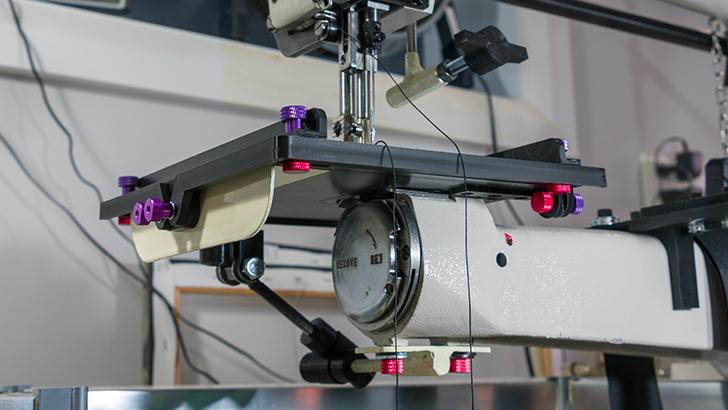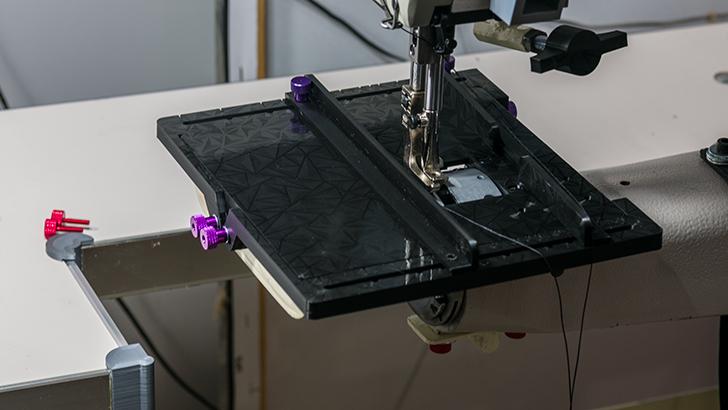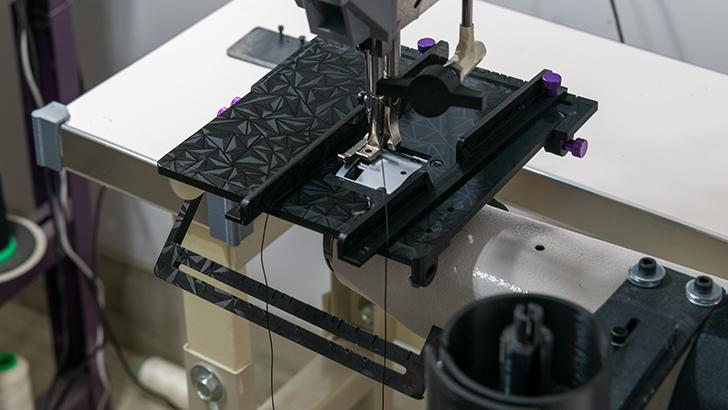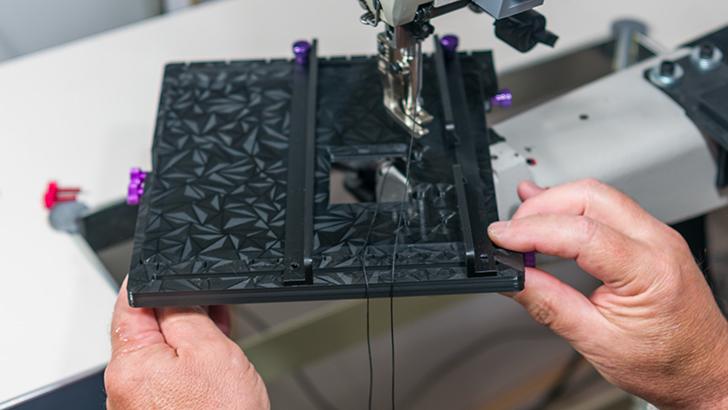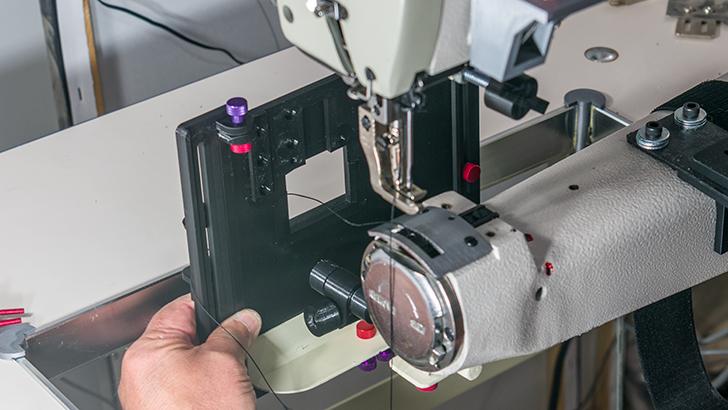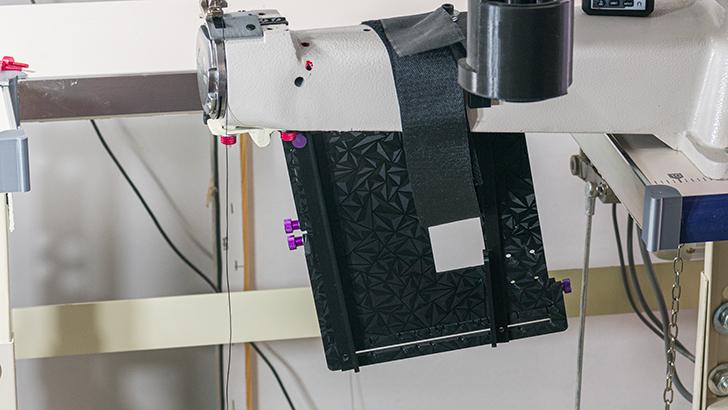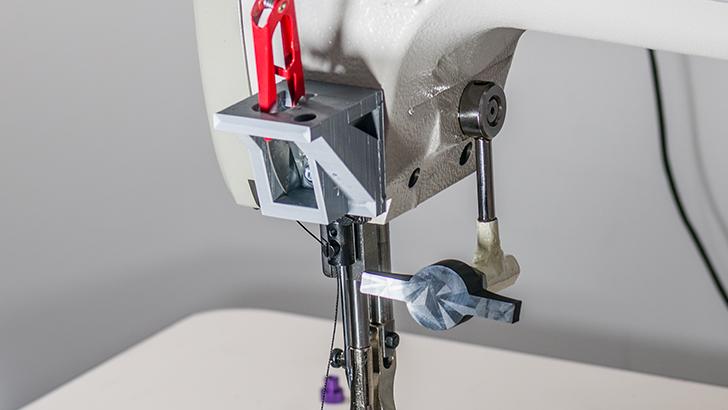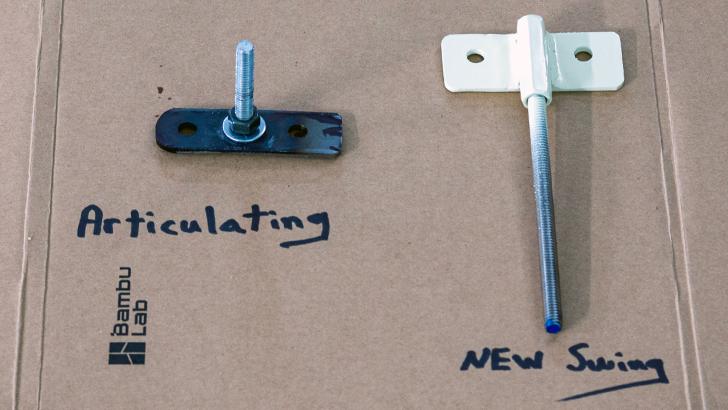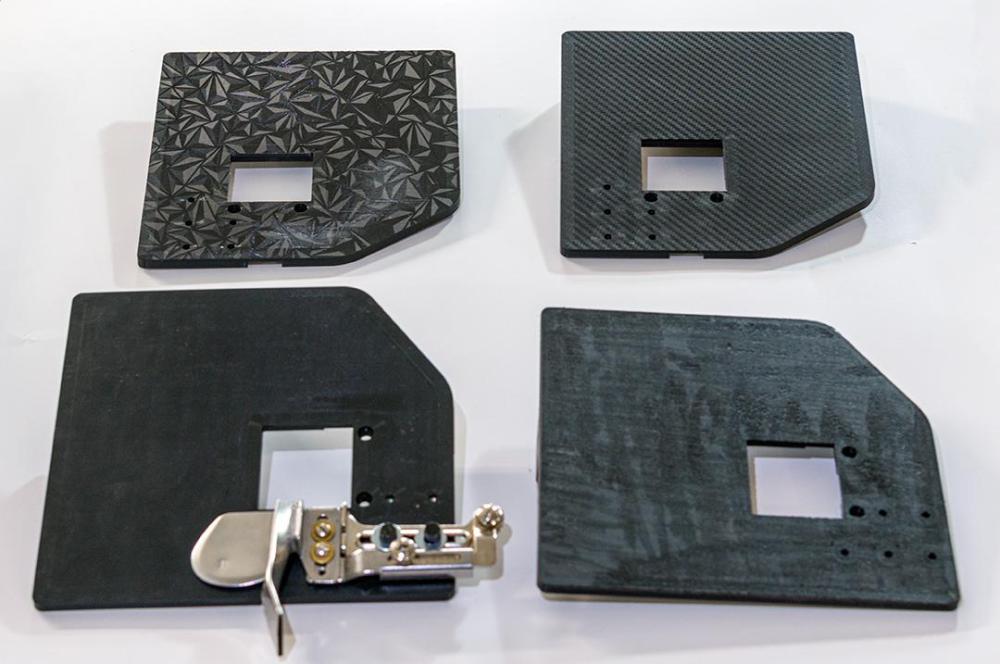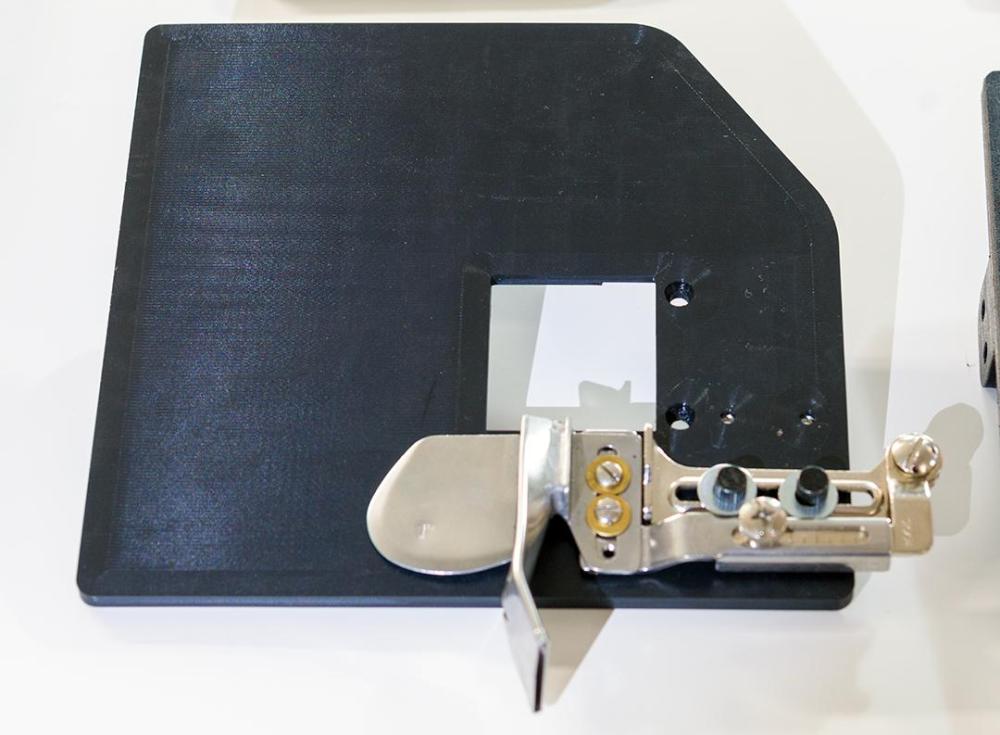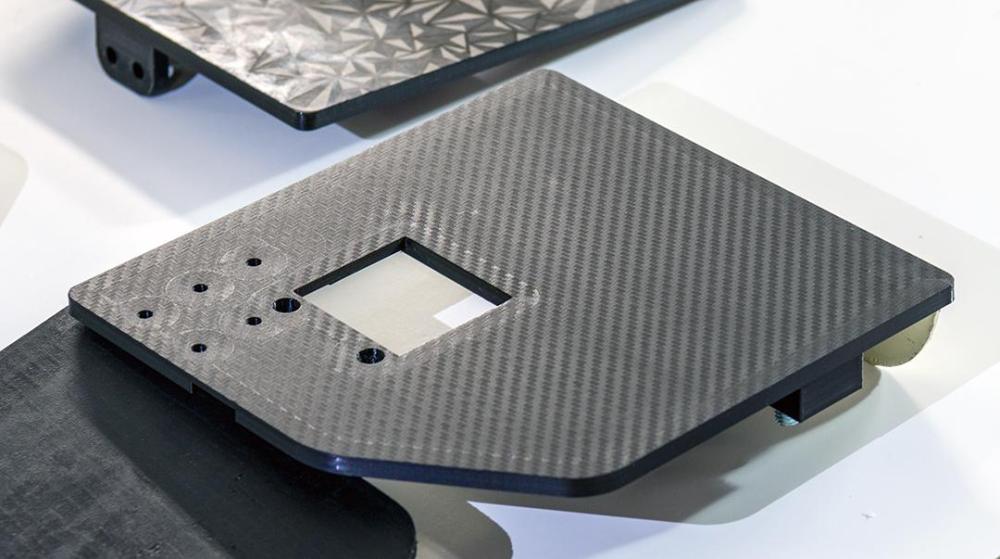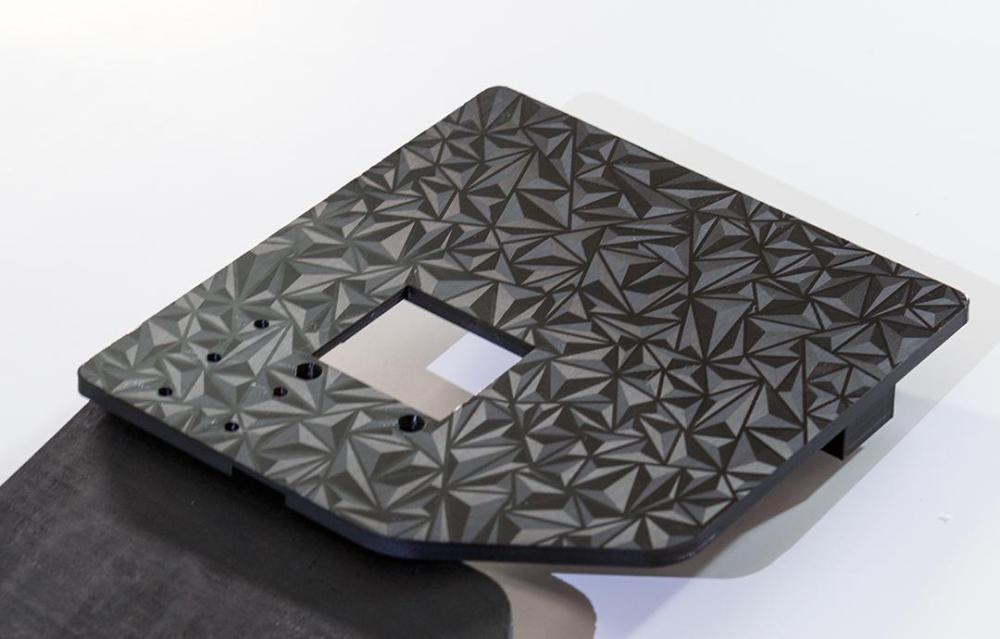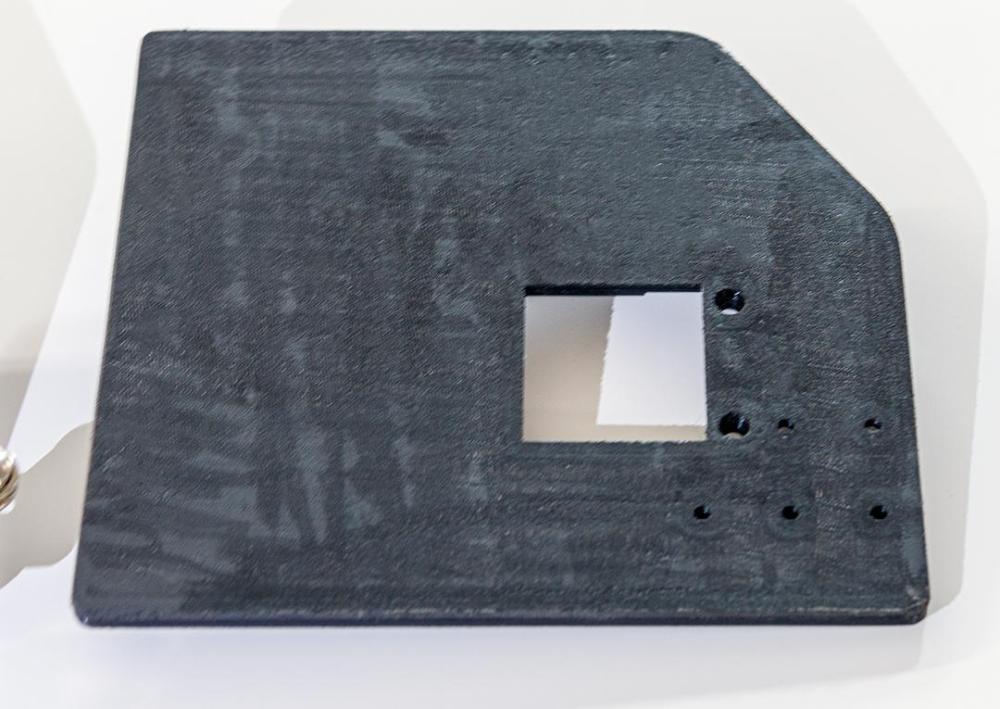
kgg
Contributing Member-
Posts
3,305 -
Joined
-
Last visited
Content Type
Profiles
Forums
Events
Blogs
Gallery
Everything posted by kgg
-
Yes according to the specs the Reliable and the Sailrite motors appear to be clones of one and another with both being 12 coil designs. There is more at play here when trying to find the min startup speed of the motor. You need to know the size of the small pulley on the end of the motor and the size of the hand-wheel pulley on the sewing machine. So finding someone with the exact same setup and an rpm digital tachometer maybe difficult. Since you can measure the size of your hand-wheel all then left is to determine the size of the small pulley on the motors and their speed range. Once you know those parameters you can use a pulley calculator to determine what to expect on your machine whether it is a brush or brushless servo motor. What I found is that Reliable does not list the speed range but I'm assuming it to be like the Sailrite Workhorse. They say " which let you set your top stitching speed while maintaining variable speed control. Variable maximum speed settings range from 400-3600 stitches per minute. " which does differ from the max rpm of the motor being rated at 4500 rpm. So from that the motors low start up speed is 400 rpm. Sailrite lists two pulleys a Black one and Silver one with the Black one being a clogged 33mm and the Silver being a V-belt 60mm. These specs are from their webpage ( https://www.sailrite.com/Sailrite-Workhorse-Servo-Motor-110V ) The specs for the Consew I could not find. My experience with a digital servo motor with a speed range of 500 - 5000 rpm on a 800 watt, 9 coil and with no reducer pulley are Calculated top speed of the hand-wheel pulley should come in at 156 rpm using a 160 mm hand-wheel pulley size, a 50 mm motor pulley and with the motor speed set to the minimum speed of 500 rpm's. This particular servo motor is a 800 watt brushless 9 coil servo motor with a speed range of 500 to 5000 rpm's. Measured pulley and hand-wheel sizes were. i) The hand-wheel pulley measured out to be 159mm. ii) The small pulley at the motor measured out at 49mm. Measured results with 500 rpm's showing on the controller screen i) with the foot pedal fully depressed the rpm's with my digital tachometer showed 154.5 rpm's with no material under the needle ii) with the foot pedal feathered to get the minimum hand-wheel pulley speed the digital tachometer showed a low rpm reading of 61 rpm's with no material under the needle. From that I can assume a no load ramp up speed of 61 rpm's. Hope this helps, kgg
-
Getting nice cutouts or overhangs when 3D printing can be a chore particularly with bed slingers or single head core XY machines without an Automatic Material System (AMS). The trick to remember is some filaments will not stick / bond together with other filament types. If you are using i) PLA use PETg in those sections ii) PETg use PLA. Where it will have to change from one type to the other there is no need to do all the support in the opposite filament type. All you need is 2-3 'top' layers in the opposite type. Just enough so it pops off nicely and gives a nice finish to the 'bridge' area. Obviously, if you are putting a support that does not go from plate to the part (say in a 'window' on a part you are printing) you will need to make the bottom 3 layers also be the opposite type. This old school trick can be done with a bed slinger but you will have to babysit it and manually change / drain the filament in the head on every filament change. With a Automatic Material System (AMS) system it just does the necessary filament changes for you. An example is that I wanted a particular side of a edge guide for the right side of the needle to be printed face down on the plate so the side that would have material rubbing against it was super slick. That meant the over hang would be nearly over 30mm from one side to another, unsupported. I was using 3d850 so I used PETg to fill that area and when the print was finished it just popped off leaving a nice crisp cutout. The first photo shows the side that was face down on 3D plate to give that nice slick 3D finish. The second photo shows the 4.25 mm deep cutout with the 30mm bridge. The third photo shows the backside of the edge guide as it sits on the table top. kgg
-
Class 26 flip down edge guide adapter...
kgg replied to TheDreadPirateRoberts's topic in Leather Sewing Machines
Looking at the one that the leather machine company has on their website ( https://leathermachineco.com/product/flip-down-roller-edge-guide/ ) it appears to be different then the one that they sell with the machine. The one's in the video showing how to install them shows a flat chunk of AL with a divot notched out while the one I referenced and is listed is for the Class 26 is just a flat plate. As I see it you have two options other then buying the adapter plate. Option 1. Go to Home Depot and pickup a piece of 2 or 3 flat-bar and drill the necessary holes. Option 2. Find someone with a 3D printer and have them print a copy of the adapter plate with 3D850 filament. Me, I would do Option 2 as it would be a fairly easy to do. kgg -
What a lot of RVers use to deter mice is use bounty dryer sheets. Before using them spring always brought a surprise after the winter and not a pleasant one. No matter what I done the little buggers would get in and destroy something in either the engine bay or inside the RV. The solution was the bounty dryer sheets and laying them everywhere, in cupboards, under seats, glove box, engine bay, under carriage storage, etc. The end result was no more mice just normal spring cleanup before the next trip. kgg
-
What I do for my work boots and I'm no expert is I use 100 percent JOJOBA cold pressed oil and white food grade mineral oil. I rub about two ounces of JOJOBA oil per work boot oil into the leather and let it get absorbed then I apply about six ounces of mineral oil in and let the boots sit overnight. Seems to work at making the boots water resistant, softens the leather and seems to add back some moisture into the leather. The downside is that the tan colored leather will be darken but for a work boot I don't mind. The JOJOBA oil is probably the closest thing to sperm whale oil. kgg
-
Thank you. I'm working on getting rid of the velcro strap. Working on a 10" X 16". Just got to finish the presser foot lift and a swing away roller edge guide. All opinions and comments are invaluable regardless of currency. kgg
-
Here is Uwe's video @Uwe. kgg
-
Canadians, what are your favourite sources of tooling leather in Canada?
kgg replied to SpruceMoose's topic in Suppliers
I have purchased leather from Cuir Di Zazzo Leather in Montreal and they are fully bilingual. It was worth the drive as there prices were much better then anywhere I could find in Ontario. Maybe worth a email or phone call. https://en.cuirdizazzo.com/ kgg -
Cowboy Outlaw Hand Crank - Needle Size Help Please
kgg replied to ZATARA's topic in Leather Sewing Machines
The machine you have takes 793/794 needle system needles. Basically you are stuck with that needle system which is a large diameter needle system meant to punch through thick leather up to about 3/4" thick with thread sizes from V69 to V346. I have never seen a needle size below a number 20 for that needle system. The best one to contact would be @CowboyBob for available needle sizes. The 794DIA 200/25 tells you the needle system (794) and the size of needle where the 200 is the metric size and the 25 is the US size. The needle that came with your machine is a #25 needle meant for V277 thread. A good reference chart for needles versus thread size can be found at https://www.tolindsewmach.com/thread-chart.html kgg -
I am not familiar with the Seiko machines as in my neck of the woods they are not a common machine. Looking at the spec it takes a 793 / 794 needle so the needle has a large diameter and will punch large holes which maybe not want you want. I would put the Seiko CH-8B in the 441 class of machines based on it being rated for threads sizes from V138 to V346. This machines is a compound feed so I don't think a roller foot is going to work as I think you need a drop feed machine for the roller foot to work. I would suggest looking at other machines better suited to handling the thinner leathers of shoe uppers, wallets and with smaller diameter needles like 135 x 17 for fabric or 135 x 16 for leather. Yes you can sew thinner items and close to the edge if you can get the proper needle plates. They are available for the Juki TSC441 and clones but I don't know if they are available for the Seiko. As for an all rounder I would suggest a Juki LS-1341 or clone, there are a lot of them, when combined with a table top attachment can be very versatile. The drawback is V207 would be the largest thread you would be able to use. kgg
-
Thank you, I appreciate the compliment. I haven't tried a drop-down edge guide on the 441. I know when I did the installation of one on the Sailrite LSZ-1 clone it wasn't as convenient as I thought it would be and wound up in a spare parts bin somewhere in the basement. I can see that it could get a bit crowded in that section and with my chubby hands I would probably skin a couple knuckles. HaHa That would be a nice winters project. Maybe something like a one armed bandit. kgg
-
I did have a couple of comments that my first articulating table top attachment was shall we be honest and say a little overly complicated, the mounting hardware took away from the look of the machine and looked clumsy. So I think I have corrected those concerns while still allowing it to be swing away and be stored underneath the cylinder arm. The twist to the original table top attachment is that is now modular and I have added two drop down straight edge sewing guides. The surfaces of the table top and edge guides that any material will touch are really smooth / slick to prevent catching and reduce tension. The straight edge guides can be used together (one on each side of the needle) or individually (to the left or right of the needle). The front and back drop down sections have measurement marks in their surfaces with half moon marks indicating "inch" marks from the center of the needle so getting accurate and straight alignment of the straight guides is pretty easy. Also in the photo's is a adapter that I made that attaches to the existing vertical lifting rod for raising the presser foot up by hand. This is a rough working prototype as the original knuckle buster round black ball on the end of the vertical rod was a royal pain to get too with my chubby fingers. By extending it out towards the front of the machine it is much easier get to and more accurate to operate. The last two photo's are of the original vertical attachment and the new horizontal attachment. I know my welding skills are in need of improvement so for those who know how to weld have a chuckle and bear with me. There is another addition to this table top attachment that will extend it's size to about 10" x 16" that I will probably complete a little later on. I would like to thank @MtlBiker for his input throughout this project. All comments and or suggestions are always welcomed. kgg
-
If the machine doesn't say Juki somewhere on the machine it could be depending on the time it was made a Aurora A-460 ( tensioner on the front ) or possibly some clone of Mitsubishi, Seiko or some Chinese clone. There seems to be quite a mixture of what machines they modified. Some were walking foot machines unlike the compound feed machines of today. The best source of info would be the Hoffman Brothers as they took over some of the Ferdco ( https://hoffmanbrothers.com/leather-machines/ ), Weaver took over the Cub. kgg
-
Walking foot with teeth vs smooth - question.
kgg replied to SpruceMoose's topic in Leather Sewing Machines
I would check a couple of things first before changing / modifying your presser feet: i) the height the feet dog protrudes above the needle plate. It maybe needs to be adjusted up slightly to bite into the bottom of the leather a touch more. ii) the position of the presser foot. Is it at the level of the needle plate or above? iii) the tension on the presser foot. If I'm not mistaken the Techsew 2700 is the same as the Cowboy 227R so this manual may help. kgg CB227R_Oper.Manual_print_pages_3-13.pdf -
Walking foot with teeth vs smooth - question.
kgg replied to SpruceMoose's topic in Leather Sewing Machines
Knowing what machine would be helpful. kgg -
To cover your range of items you IMO would need a class 441 machine like the Juki TSC-441 or similar clone to sew holsters with the thickness of leather needed in conjunction with the heavy thread that would also be required, V277 and thicker. For wallets I would suggest a cylinder arm machine like a Juki LS-1341 or similar clone as it can be converted to a flatbed by adding a flatbed table attachment. There are needle plates and feed dogs available to allow a class 441 machine to sew thinner items with much thinner thread. A lot will depend on your pocket book, these machines even used are not a cheap investment. kgg
-
Yep, we are getting as bad as California and becoming a nanny state. The funny thing is if you want a gallon, 5 gallon pale or a 40 gallon drum, no problem but those little 4, 8 or 16 oz bottles are the devils juice reincarnated. Here is a link to the article on Zelikovitz Leathers site ( www.zelistore.com/en-ca/blogs/news ). kgg
-
Who did you order the 120 mm pulley from? kgg That calculator saves a few of the old remaining brain cells. kgg
-
He must have meant "new to you". kgg
-
To me it appears Used. A new one is about $3000 plus shipping. The best one probably would be @CowboyBob to comment on the age. The value depends on the operating condition whether it has a stand and motor, speed reducer, etc. I wouldn't consider it for a $500 plus shipping difference over a new one. For me it would have to be a complete package and sub $1800 but that's just me. kgg
-
Here is a good link to save you some time when designing your speed reducer and get a pretty accurate estimate of what you design will give you. https://www.blocklayer.com/pulley-belt kgg
-
I know there are a few who use 3D printers with the majority probably being flatbed slingers or core XY machines and this may help provide some information on what to expect when printing parts using different bed plates. The example I am showing are of four final outputs using the same design .step files. All are acceptable from a strength point of view and were printed with 3d850 filament. The first photo showing the the four table top plates for the 441 are the same size but they appear to be different sizes in the photo due to the angle it was taken. The first photo is of the engineering plate which is similar to the Prusa 'Satin' Plate as it is a PEI coated plate that has more stippling grip that an old school PEI sheet but not as much as a PEI "textured" plate. Basically a compromise design between smoothness and 'stickiness'. We did not use it long enough to judge its sticky abilities before moving on to new tech plates. Aesthetically acceptable does have mild some grip to the surface. The second photo is carbon fiber pattern PET, a lower grade of PEO and basically the same as PETG without the glycol added. Its Glass Transition temperature (Tg) is 70C so once again great for PLA and 3860/3870 but PETG (let alone ABS) is a non-starter. Where it is not as robust as PEO the pattern in the sheet is more noticeable to the touch and the finishing surface is not as smooth. Still better than even 'satin' PEI sheets but not as good as 'smooth' PEI sheets. Parts do not stick as well to it as PEO, so when cool parts do pop right off, but while hot you have to rip them off. Aesthetically acceptable does have less surface grip to the surface. The third photo is a 3D pattern and my favorite a PEO sometimes called 'PEG' plastic. Similar to PETG but higher temperature resistance. The latest PEO plates can handle over 100C, the older ones can handle ~80C. NONE should be used with PETG filament as they probably will bind to each other. Causing you to rip the 'sticker' PEO sheet. These plates result in as smooth a surface as old-school 'smooth' PEI plates and arguably as smooth as glass with just as much 'shine'. BUT PLA sticks to it better than PEI textured plates. Even when cool it takes a tiny bit of effort to release the part from it. Aesthetically very acceptable has less surface grip then the other surfaces more like polished glass. The fourth photo is the least aesthetically acceptable with the greatest amount of surface grip and was done on Prusa MK3S with a full bear upgrade (bed slinger) and retained the glue tracking lines on the bed. It is also I think worthy to note that the printing time for the first three took approximately 5 hours each at standard speed and were done on Bambu X1 Carbon (core XY) while the last one was done using the Prusa MK3S with a full bear upgrade taking approximately 16 hours to print. All comments, discussion are always welcomed. kgg
-
HELP! Bobbin thread on top only when start sewing
kgg replied to Relative's topic in Leather Sewing Machines
I think on the 1541 you need to adjust the hook timing and it's position. Here is a couple of video's you may find helpful https://www.youtube.com/watch?v=cHyn5A1v-hs https://www.youtube.com/watch?v=5KtJCSfRafA https://www.youtube.com/watch?v=obvI-v7w0qA Also here is a copy of the Juki 1541 manuals kgg JUKI_DNU-1541-7OwnersManual.pdf JUKI DNU-1541 Parts List.pdf JUKI_DNU-1541-S-7EM01_SERVICE_MANUAL.pdf -
HELP! Bobbin thread on top only when start sewing
kgg replied to Relative's topic in Leather Sewing Machines
The problem as I see it, especially thinner items, there can be a few variables at play. i) if the forward and reverse stitches aren't in perfect syn then you could be dealing with a tension issue in the stitch cycle particularly should you decide to change direction ii) if the timing is off just a touch then you probably going to have a stitch problem iii) then you have to deal with how accurate the needle position software is as these units are generic in nature and typically not tuned for one style/type/manufacture of machine. Some of these don't work properly on some machines and work OK on others iv) how accurately and securely they are mounted to the frame of the machine. Some people love them, some not so much. I don't particularly even like brushless servo motors as the box of electronics adds another layer of complication when trouble shooting. Then add in a needle positioner and it can become a real problem to back track and correct problems. I guess I fall into the "not so much" group but that is probably just me. kgg -
I do agree they are big and I actually just got the other day a set of feet that I just haven't had a chance to install. kgg






